Land Invertebrates
Media
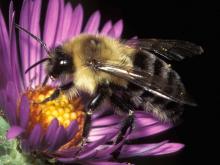
Species Types
Scientific Name
Bombus impatiens
Description
The common eastern bumblebee is widespread in the eastern United States. It is one of several species of bumblebees that occur in Missouri.
Media

Species Types
Scientific Name
Bombus auricomus
Description
The black-and-gold bumblebee is associated with prairies and other grasslands. It is one of several species of bumblebees that occur in Missouri.
Media
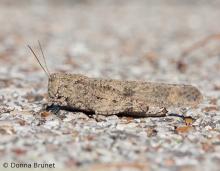
Species Types
Scientific Name
Dissosteira carolina
Description
The Carolina grasshopper is frequently seen in dusty, open habitats like dirt roads and vacant lots. Its yellow-bordered, black hindwings make it look like a mourning cloak butterfly.
Media

Species Types
Scientific Name
Trimerotropis saxatilis
Description
The lichen grasshopper sticks to sunny, rocky areas, such as the many rocky glades and hilltops in the Ozarks, where lichens are plentiful. It is perfectly camouflaged there.
Media
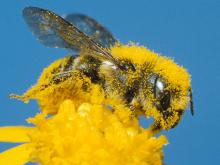
Species Types
Scientific Name
More than 630 species in North America north of Mexico
Description
Megachilid bees are a family of solitary, native bees that carry pollen only on the underside of the abdomen, never on the hind legs. Large cutting mouthparts allow them to collect pieces of leaves, soil, or plant resins to line their nests.
Media

Species Types
Scientific Name
More than 1,200 species in North America north of Mexico
Description
Andrenid bees, also called mining bees, are solitary ground-nesters. Most are specialist pollinators whose life cycle is timed to correspond precisely to the blooming of specific flowers.
Media

Species Types
Scientific Name
About 1,000 species in North America north of Mexico
Description
Many apid bees are well-known. This family includes the familiar honeybee, bumblebees, and carpenter bees, plus many that are less well-known. With few exceptions, most of Missouri's apid bees are native, solitary species.
Media
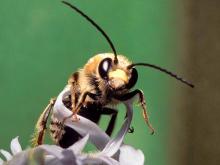
Species Types
Scientific Name
More than 200 species of tribe Eucerini (longhorn bees) in North America north of Mexico
Description
Longhorn bees are named for their long antennae, which make these fuzzy, medium-sized bees look rather cute. Many have yellow faces.
Media

Species Types
Scientific Name
Promachus vertebratus
Description
The green robber fly is one of several species of robber flies called giant robber flies or bee killers. They are indeed large, with distinctive yellow and dark stripes on the abdomen and iridescent green eyes.
Media
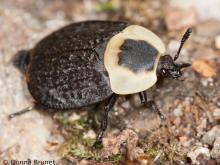
Species Types
Scientific Name
Necrophila americana
Description
The American carrion beetle has a yellow pronotum with a big black spot in the middle. Adults of this species of silphid beetle eat fly maggots, plus some carrion. In flight, they seem like bumblebees.
See Also



Media

Species Types
Scientific Name
Cisseps fulvicollis
Description
The yellow-collared scape moth is more often “orange-collared.” And whether you think it looks more like a firefly or a wasp, it’s still a moth!
Media

Species Types
Scientific Name
Nearly 150 species in North America north of Mexico
Description
Slim, delicate plume moths are instantly recognizable by their T-shaped silhouette, long legs, and muted shades of tan and brown. It can be hard to separate the various species.
Media

Species Types
Scientific Name
Pyrrharctia isabella
Description
Not many people know the adult Isabella tiger moth when they see one, but we’re all acquainted with its caterpillar, the woolly worm, or woolly bear.
About Land Invertebrates in Missouri
Invertebrates are animals without backbones, including earthworms, slugs, snails, and arthropods. Arthropods—invertebrates with “jointed legs” — are a group of invertebrates that includes crayfish, shrimp, millipedes, centipedes, mites, spiders, and insects. There may be as many as 10 million species of insects alive on earth today, and they probably constitute more than 90 percent all animal species.





















